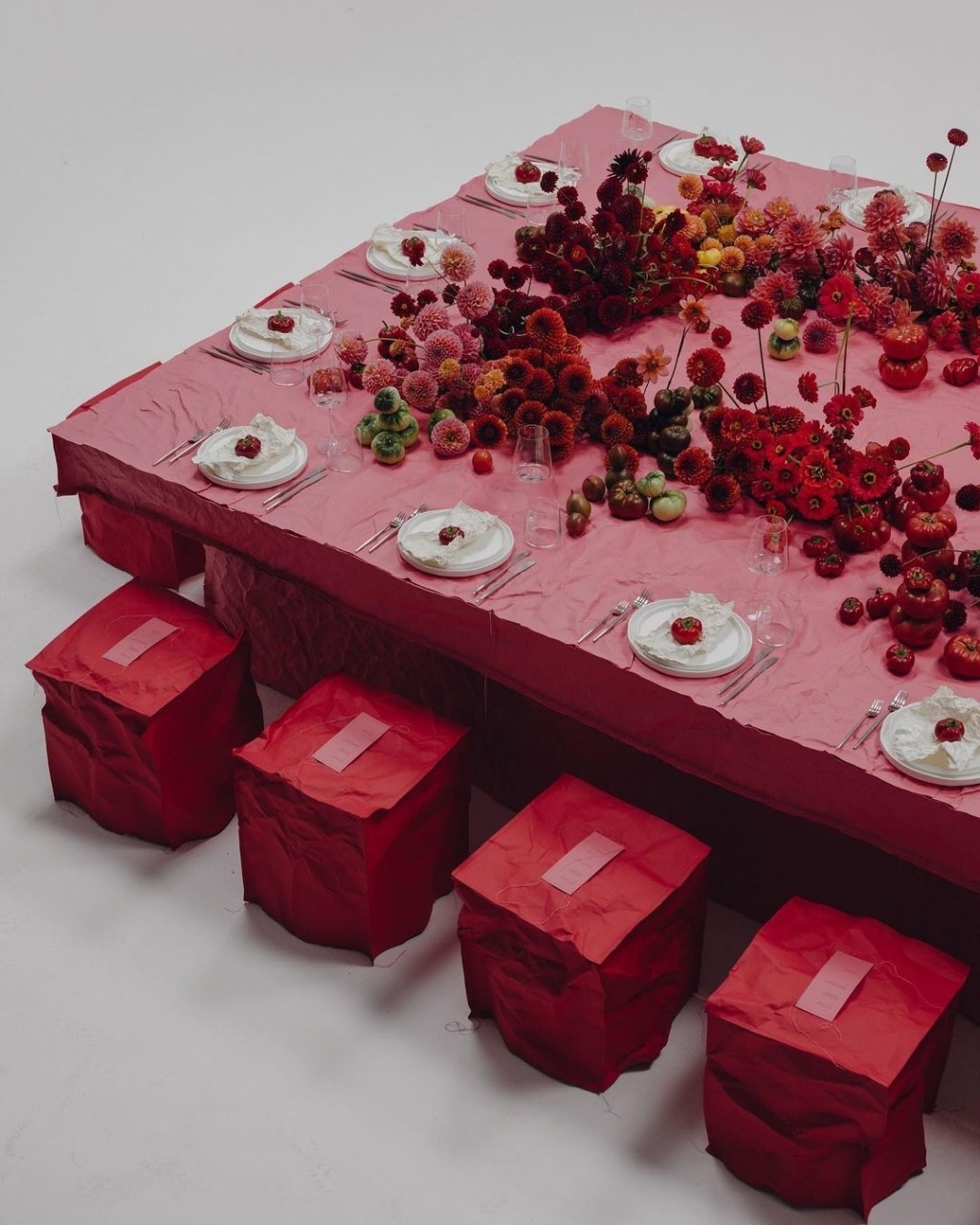Your Ultimate Guide to Wedding Dress Care
- Author: Natali Grace Levine
- Reading time: 9 min 14 sec
- Publication date: 11/27/2024
- Updated: 08/14/2025
Your wedding dress is more than just fabric—it's a cherished keepsake that holds memories of one of the most magical days of your life. Whether you plan to preserve it as a family heirloom or simply want to ensure it stays pristine for years to come, proper care is essential. This ultimate guide will walk you through everything you need to know about cleaning and preserving your wedding dress, from understanding its fabrics to avoiding common pitfalls.

Understanding Wedding Dress Fabrics: Why It Matters


Every wedding dress is unique, not just in design but also in the materials that make it special. The fabric of your gown plays a huge role in how it looks, feels, and, most importantly, how it needs to be cared for. Understanding your dress’s fabric is the first step in ensuring it remains as stunning as the day you wore it.
Different fabrics have distinct characteristics and cleaning requirements, so knowing what you’re working with can help you avoid accidental damage and keep your gown in pristine condition. For example, some fabrics are more delicate and require professional care, while others are more resilient and may allow for at-home cleaning.
The Most Common Wedding Dress Fabrics
Here’s a breakdown of the most common fabrics used in wedding dresses and why they require specific care:
- Silk: Known for its luxurious sheen and smooth texture, silk is a natural fiber that’s both elegant and fragile. It’s prone to watermarks and discoloration, so it typically requires specialized cleaning by professionals.
- Satin: Satin is a popular choice for its smooth, glossy finish and durability. While it’s less temperamental than silk, it can still show stains and needs careful handling during cleaning.
- Lace: Lace adds a romantic and delicate touch to any gown. Its intricate patterns can hide stains, but they also make it tricky to clean without snagging or tearing.
- Tulle: Lightweight and whimsical, tulle is often used for skirts and veils. It can be difficult to clean due to its fine mesh structure, which is prone to tearing and trapping debris.
- Organza: Organza is a sheer, lightweight fabric that provides structure without bulk. It’s delicate and can be easily wrinkled or damaged if not handled properly.
- Chiffon: This soft, flowy fabric drapes beautifully but is prone to pulling and snagging, requiring a gentle touch during cleaning.
- Crepe: With its slightly textured surface and soft drape, crepe is elegant and modern. It’s less likely to snag but can lose its crisp look if not stored correctly.
- Beaded or Embroidered Fabrics: Gowns with intricate beading, sequins, or embroidery are show-stoppers, but they require extra care. These embellishments can loosen during cleaning or storage if not properly handled.
Why Fabric Knowledge Matters for Cleaning and Preservation
Knowing your dress fabric helps you determine:
- How to Clean It: Whether you can safely spot-clean at home or if it needs professional attention.
- How to Handle It: Some fabrics are more resistant to wrinkles or stains, while others require immediate action to prevent permanent damage.
- How to Store It: Certain materials, like silk, require breathable storage solutions to prevent yellowing or mildew.
Expert Insight: A wedding dress preservationist once shared that many brides unintentionally damage their gowns by using cleaning methods not suited to their fabric. “Silk and water don’t mix,” she explained. “Even a simple water blot can leave a visible mark.”
Immediate Post-Wedding Care: The First 24 Hours


The wedding may be over, but the journey of caring for your dress is just beginning. The first 24 hours after your wedding are crucial for ensuring your gown stays as beautiful as it was on your special day. Whether it’s a speck of dirt from your outdoor photoshoot, a smudge of lipstick from all those hugs, or a sneaky wine stain from the reception, taking immediate action can prevent these marks from setting in permanently.
Why Quick Action Matters

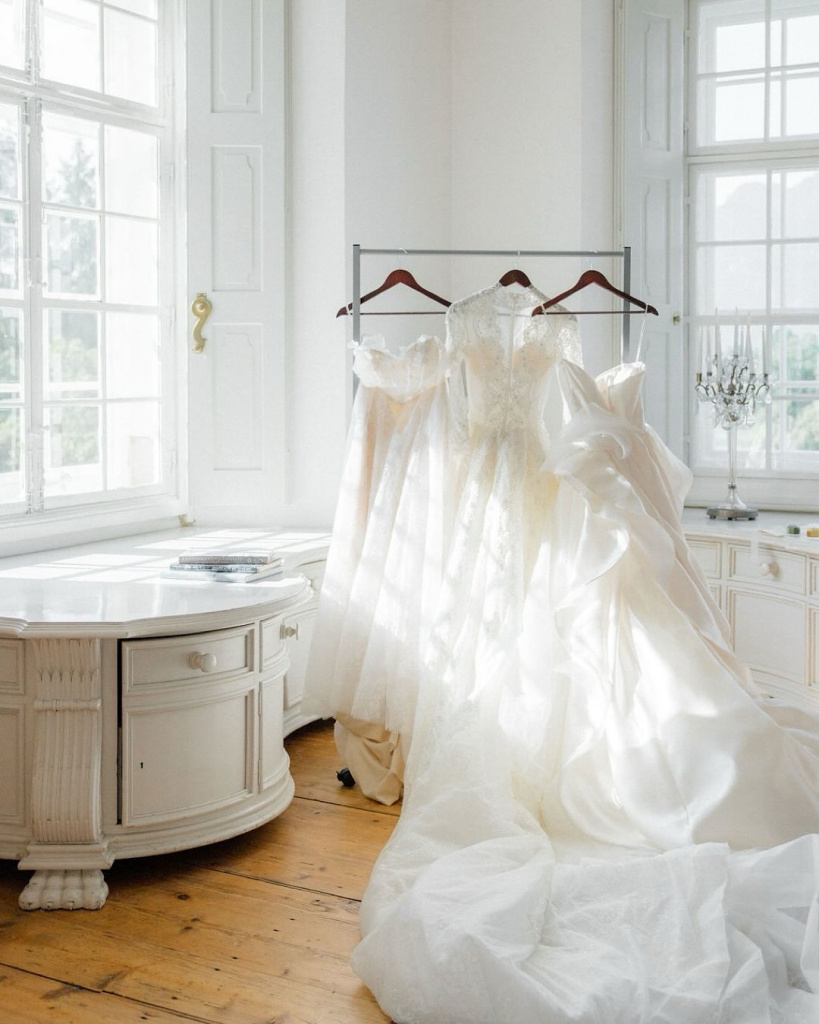
Wedding dresses are made from delicate fabrics that can be unforgiving when it comes to stains, spills, and creases. Waiting too long to address these issues can lead to permanent discoloration, unpleasant odors, or even fabric damage. Taking a few simple steps right after the wedding can make professional cleaning and preservation much easier.
Essential First Steps
Here’s what to do within the first 24 hours to safeguard your dress:
Inspect the Dress:
- Look over your gown for visible stains, loose threads, or damage.
- Pay special attention to high-contact areas like the hem, bodice, and underarms.
Spot-Treat Minor Stains:
- For water-soluble stains like food or sweat, blot gently with a clean, damp white cloth.
- Avoid rubbing, as this can push stains deeper into the fabric.
Hang It Properly:
- Use a padded hanger to prevent stretching or damaging delicate straps.
- If the dress is particularly heavy, lay it flat on a clean, white sheet to avoid adding stress to the fabric.
Air It Out:
- Place the dress in a cool, well-ventilated room to allow it to dry if it’s damp from sweat or spills.
- Avoid hanging it in direct sunlight, which can cause fading or yellowing.
Avoid Plastic Bags:
- Plastic traps moisture, which can lead to mold, mildew, or discoloration. Use a breathable garment bag if you need to transport the dress.
Handling Specific Stains
- Wine or Champagne Stains: Dab gently with a damp cloth soaked in cold water. Do not use hot water, as it can set the stain.
- Grass or Dirt Stains: Let any dirt dry completely, then carefully brush it off before treating with a damp cloth.
-
Makeup Smudges: Gently blot with a makeup remover wipe designed for sensitive skin, testing on an inconspicuous area first.
What to Avoid
- Do Not Delay: Waiting too long to address stains allows them to set, making them harder to remove later.
- Avoid Using Harsh Chemicals: Household stain removers can damage delicate fabrics or cause discoloration.
- Don’t Fold or Compress the Dress: Folding can lead to creases that are difficult to remove, especially in fragile fabrics like tulle or organza.
At-Home Cleaning Tips: When DIY is an Option
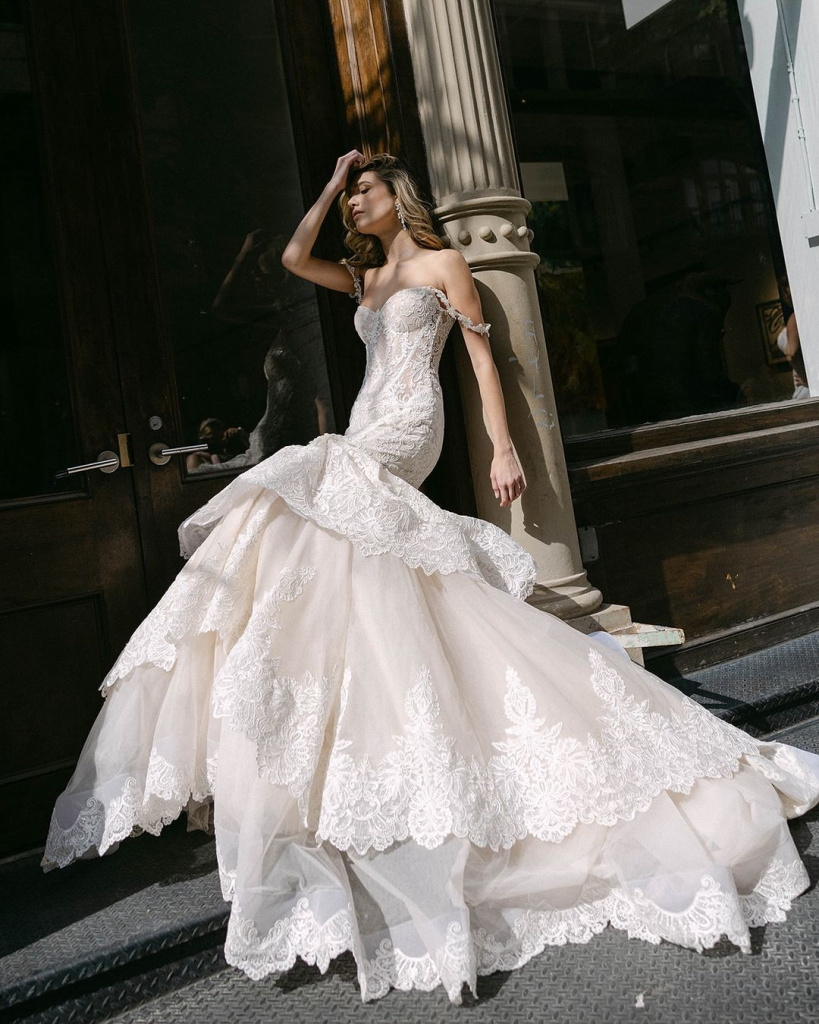
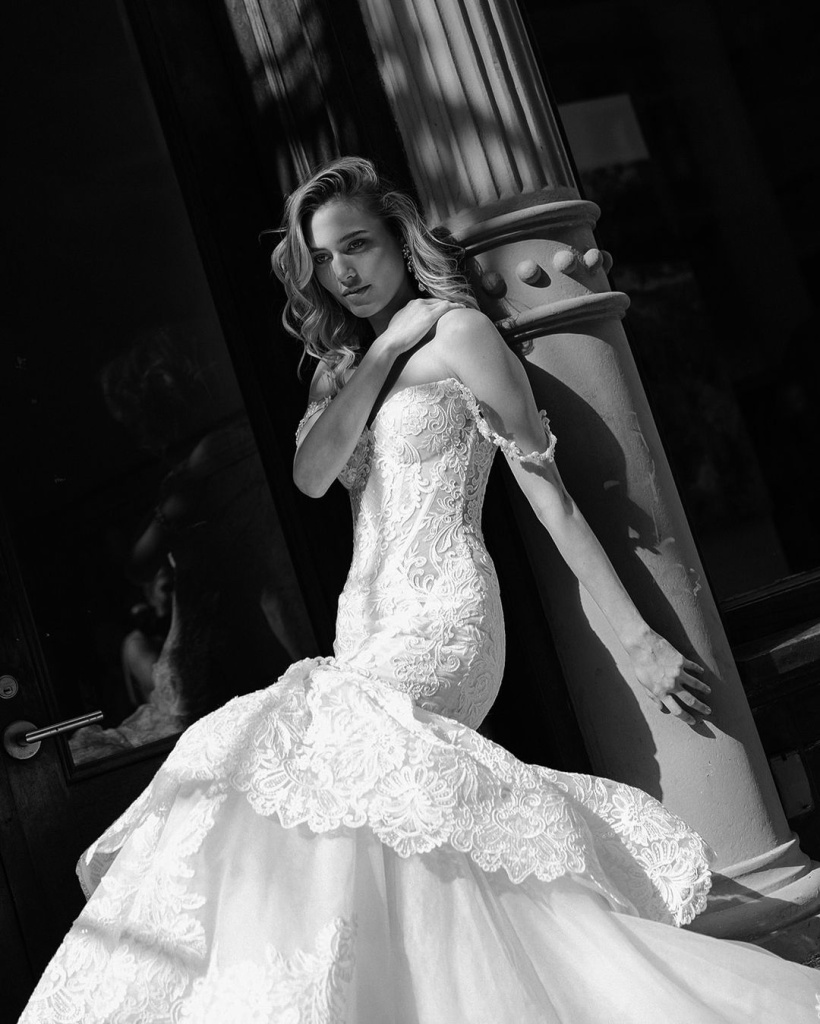
While professional cleaning is often the best choice for intricate or heavily soiled wedding gowns, there are times when a DIY approach is practical and effective. If your dress has only minor stains or is made from durable, simple fabrics, cleaning it at home can save you time and money. However, it’s important to proceed with care to avoid accidental damage.
When DIY Cleaning Makes Sense
At-home cleaning is a good option if:
- Your dress doesn’t have heavy stains or complex embellishments.
- The fabric is relatively durable, such as polyester or satin.
- You’re comfortable using gentle cleaning methods and have the space to handle the gown carefully.
Important Note: Always check the care label inside your gown for fabric-specific instructions before attempting any cleaning.
How to Clean Your Wedding Dress at Home
Follow these steps to safely clean your dress without professional help:
Gather the Right Supplies
- A clean bathtub or large basin
- Mild, fragrance-free detergent (look for one labeled safe for delicate fabrics)
- White cotton cloths or sponges for spot cleaning
- A soft-bristle brush for tougher stains
- Acid-free tissue paper or a white sheet for drying


Spot-Clean Stains First
- Inspect the gown for stains. Common culprits include makeup, sweat, and grass.
- Use a damp white cloth to gently dab (not rub!) the stain.
- For stubborn marks, mix a small amount of detergent with water and apply using a cotton swab. Test on an inconspicuous area first to avoid damage.
Hand-Wash the Gown (If Safe)
- Fill a clean bathtub with lukewarm or cold water—never hot, as this can damage delicate fabrics.
- Add a small amount of mild detergent, stirring until it’s well-dissolved.
- Submerge the gown, gently swirling it through the water for 10–15 minutes. Focus on areas like the hem and underarms where dirt and sweat accumulate.
- Rinse thoroughly with clean, cool water until all detergent is removed.
Dry It Properly
- Avoid wringing or twisting the fabric, which can cause damage.
- Lay the dress flat on a clean white sheet, carefully reshaping it to its original form.
- Place it in a cool, dry room away from direct sunlight or heat to air-dry completely. This may take up to 48 hours.
When to Call a Professional
Sometimes, even the most careful DIY cleaning isn’t enough. Consider consulting a professional cleaner if:
- Your gown has intricate beading, sequins, or embroidery.
- There are large or set-in stains (e.g., red wine or grass).
- The fabric is delicate, like silk or chiffon, which can be easily damaged.
Cleaning your wedding dress at home can be rewarding when done carefully, allowing you to relive the joy of your big day while caring for one of its most treasured mementos. By following these tips, you can tackle minor stains with confidence and keep your gown looking as stunning as ever.
Professional Cleaning and Preservation: Worth the Investment


Your wedding dress is not just an outfit—it’s a symbol of one of the most important days of your life. After the celebration, it likely holds a few signs of the fun: a bit of dirt on the hem, a smudge of makeup, or even a wine stain from the toast. While at-home cleaning can be an option for some dresses, most gowns benefit greatly from professional cleaning and preservation. Investing in expert care ensures that your dress remains a cherished keepsake for years to come.
Why Professional Cleaning Is Essential
Wedding dresses are intricate, with delicate fabrics, elaborate embellishments, and unique designs that require specialized care. Professional cleaners have the expertise, tools, and techniques to address these challenges effectively.
Here’s why professional cleaning is worth considering:
- Fabric-Specific Expertise: Professionals understand how to treat different fabrics, from fragile silk to sturdy satin, without causing damage.
- Deep Cleaning: Stains you can’t see, like sweat and oil, can cause discoloration over time. Expert cleaners can eliminate these hidden threats.
- Safe Handling of Embellishments: Beading, sequins, embroidery, and lace need special care to avoid snags, loosening, or loss of detail.
- Long-Term Preservation: Proper cleaning prepares your dress for preservation, reducing the risk of yellowing, mold, or fabric breakdown over time.
How to Choose the Right Cleaner
Not all cleaners are created equal. To ensure your dress is in safe hands, follow these tips when selecting a professional:
- Look for a Specialist: Choose a cleaner who specializes in wedding dresses or formal wear. General dry cleaners may not have the expertise required for delicate gowns.
- Ask About Methods: Inquire about their cleaning techniques. Look for options like wet cleaning (a safe alternative for many gowns) or eco-friendly processes.
- Check for Certification: Certified Wedding Gown Specialists or similar credentials indicate a higher level of expertise.
- Read Reviews: Seek recommendations from your bridal boutique or other brides, and read online reviews to gauge the cleaner’s reputation.
- Inspect Before Committing: A reputable cleaner should examine your gown in detail and provide a clear explanation of their plan.
Pro Tip: Before handing over your gown, ask the cleaner if they can provide before-and-after photos of similar work to give you peace of mind.
The Cost of Professional Care
While professional cleaning and preservation can range from $150 to $1,000 depending on the gown’s complexity and the services provided, many brides find it a worthwhile investment. Consider this: the cost of repairing a damaged or discolored dress down the line may far exceed the initial expense of professional care.

Long-Term Storage: Keeping Your Dress Pristine


After your wedding dress has been cleaned and preserved, the next step is ensuring proper long-term storage. The way your gown is stored plays a crucial role in maintaining its beauty over time. With the right materials, techniques, and environment, you can protect your dress from discoloration, fabric damage, and other issues, allowing it to remain a cherished keepsake.
Why Long-Term Storage Matters
Wedding dresses are crafted from delicate fabrics and intricate details, making them highly sensitive to environmental factors. Improper storage, such as leaving the dress in plastic or exposing it to fluctuating humidity, can lead to yellowing, fading, or mildew. Proper storage techniques are essential to keep your gown in pristine condition, whether you plan to pass it down as an heirloom or preserve it for sentimental reasons.
Best Practices for Storing Your Wedding Dress
Using acid-free materials is essential to prevent yellowing. A sturdy preservation box made from acid-free materials provides excellent protection, while acid-free tissue paper should be placed between folds to cushion delicate areas like lace or beading. Storing your gown in a climate-controlled area is equally important. Places like attics, basements, or garages are prone to temperature and humidity fluctuations, which can harm the fabric. A cool, dry closet or an interior room with stable conditions is a better choice.
Handling the dress with care is another crucial step. Washing and drying your hands thoroughly before touching the gown will prevent oils or dirt from transferring to the fabric. Alternatively, wearing clean white gloves can provide an added layer of protection. If your dress is stored in a box, refolding it every two to three years can prevent permanent creases, and replacing the acid-free tissue paper ensures continued preservation.
Common Mistakes to Avoid

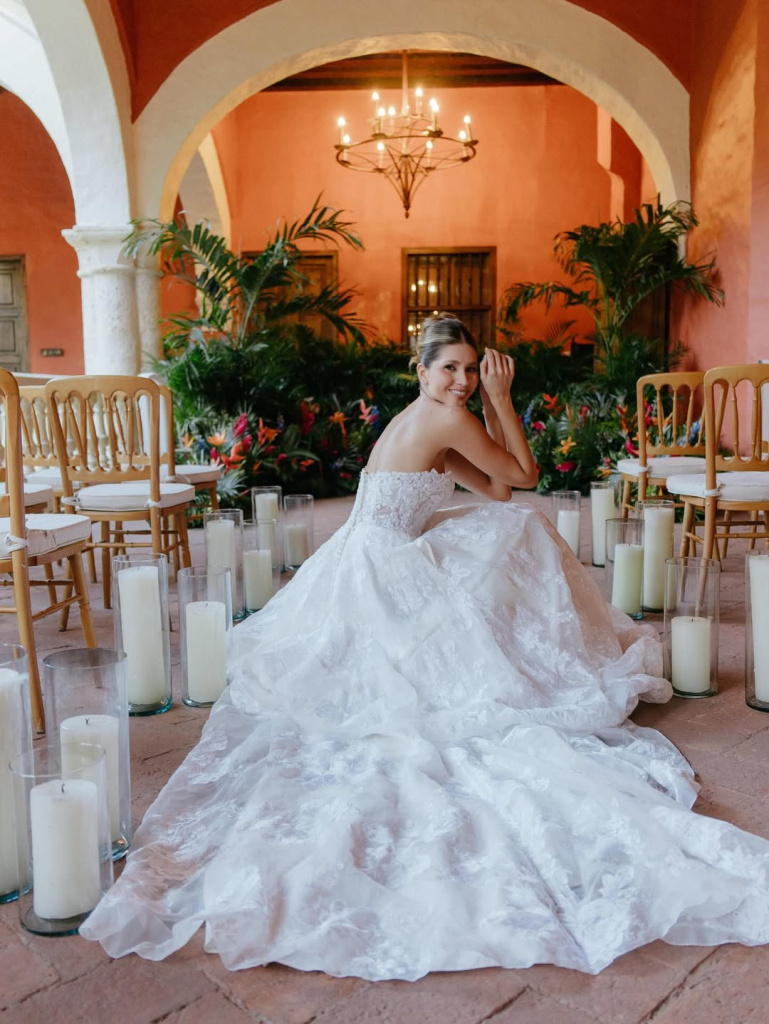
Certain storage mistakes can compromise your gown’s condition. Using plastic bags or hangers traps moisture, which can lead to mildew and yellowing. High humidity can cause mold growth, while extreme dryness can weaken the fabric over time. Regular inspections of the dress are essential, as unnoticed damage can worsen if left unaddressed. Neglecting to take these precautions can result in preventable harm to your cherished gown.
Special Considerations for Embellished or Vintage Gowns
Gowns with heavy embellishments or those made from vintage fabrics require extra care. Weighty embellishments can strain seams, so additional fabric supports or padded hangers are recommended. Vintage dresses, especially those made of delicate lace or silk, should be stored flat to minimize stress on the fabric and prevent stretching.










